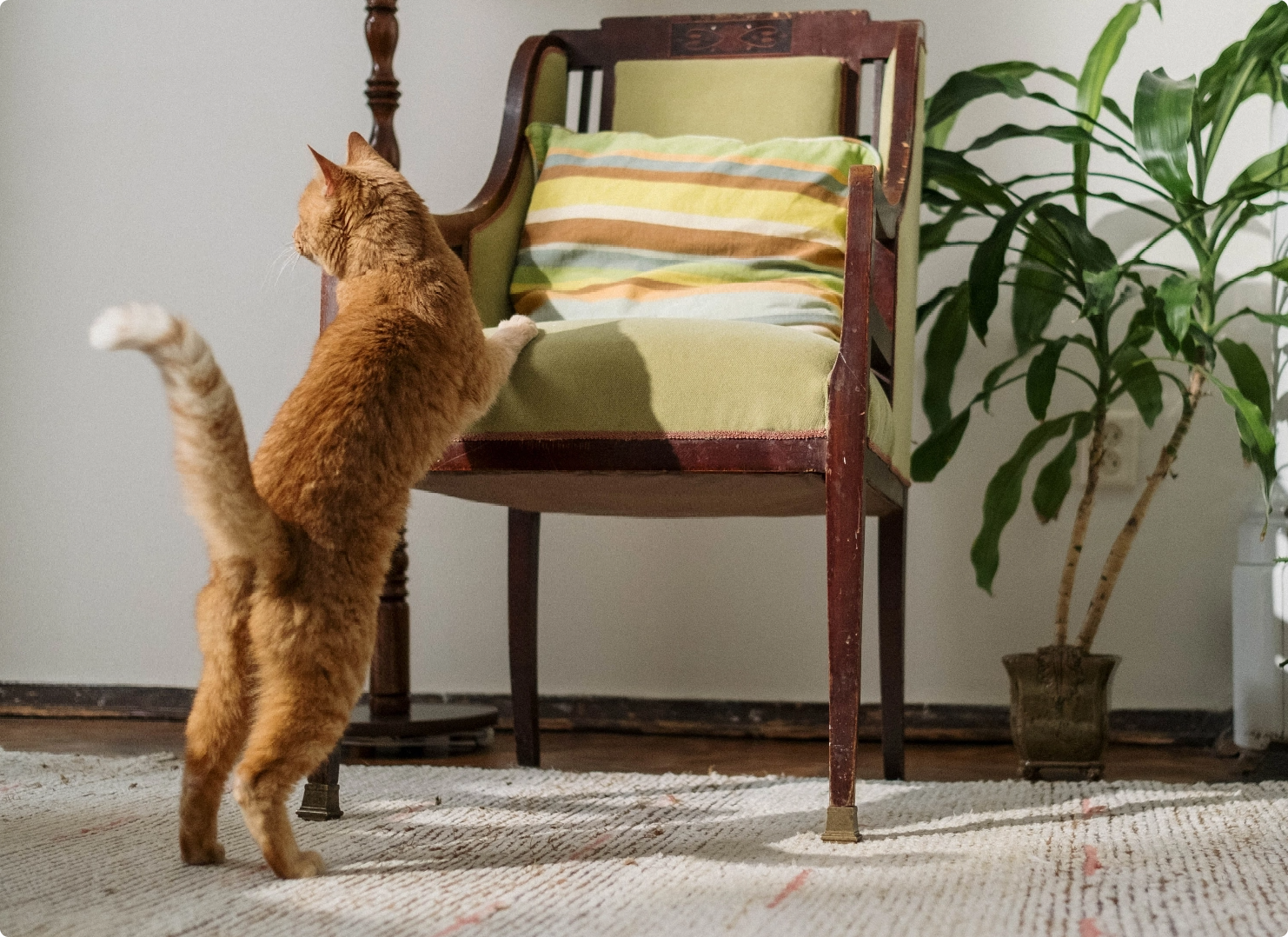
How To Cat-Proof Your Home And Protect Your Valuables?



How To Cat-Proof Your Home And Protect Your Valuables?
The Safe Room will make you both happy!
Give this room a thorough going over & provide your cat with an interesting indoor environment.
Cats love to play and will appreciate simple and inexpensive toys. Ping-Pong balls and paper bags can provide hours of fun, a comfortable perch by a window can become your cat’s very own entertainment and relaxation center.
Once kitty is comfortable in her new surroundings, it will be time to let her explore the rest of your cat-proofed home.
House Rules:
Provide some “basic training” to help your cat get along in your home. It’s true that cats usually have their own ideas about how to do things. Even so, most cats can be taught to obey simple rules like not scratching the couch, eating plants, or jumping up on the kitchen counter, with repeated, gentle, and consistent training, your cat will learn.
Yelling never works. Instead, positively reward your cat and provide alternatives choices like toys that can occupy it.
A good scratching post—coupled with the handy squirt gun filled with water can save your couch, your chair, and your nerves.
If you help your cat understand the rules and provide a satisfying outlet for the scratching impulses, there will be no need to have your cat declawed.
Toys are very important for cats, they not only fight boredom, they also give cats a chance to express their prey-chasing drives, try moving the toy while your cat chases after it and playtime will be a bonding experience for both of you.
It may take a couple of weeks for your cat to adjust to life with you, but before you know it you’ll be curled up on the couch together, watching TV like old pals, and you won’t remember what life was like without having your cat beside you.
Protecting Your Home and Your Cat:
Protect Valuables:
Cats are curious. That’s one of their main jobs – being curious. So you won’t want to leave your Ming Dynasty antique vase sitting on the coffee table, because about ten seconds into Kitty’s first exploration of the house, it will spring up on the table and topple everything on top of it.
After training your cat to the house rules, let it explore the house gradually under supervision until it is fully accustomed to the rules.
Breakables:
Put away any breakable treasures that are remotely accessible to your cat, jumping up onto high places (like shelves and counters) is innate cat behavior; trying to stop it will be stressful for both you and kitty. Instead, put yourself into the mind of the cat, look around, and remove anything you value from the way.
Furniture:
Kittens will climb your furniture and drapes, so consider covering cloth furniture with a purchased cover, or even with a blanket or bedspread and confine drapes to off-limit rooms.
Hanging Blinds Cords:
Kittens will love to bat around cords from hanging blinds, but can also get tangled up in them with disastrous consequences, the safest way is to tie the cords up out of reach.
Electrical and Phone Cords:
Kittens’ insatiable curiosity often leads them to one of the most dangerous and tempting objects in the house: electric cords, to protect your cat you have to invest in a cord management system or tape the cords together and fasten them out of reach and do the same with long phone cords.
Pest Poisons:
Remove any ant or roach poisons or traps from accessible areas to your cat.
Choking Hazards:
Rubber bands, paper clips, thumb tacks, broken balloons, Christmas tree tinsel and other small articles are tempting play objects for cats, but pose a choking hazard so it is better to put them away in containers.
Keep plastic bags and bags with small handles out of reach of your cat.

Smart Tips to Use In Kitchens and Bathrooms:
![]() Use childproof latches to keep little paws from prying open cabinets.
Use childproof latches to keep little paws from prying open cabinets.
![]()
![]()
![]()
![]()
![]()
![]()
![]()
![]()
![]()
![]()
![]()
![]()
![]()
![]()
![]()
![]()
![]()
![]()
![]()
![]()
![]()
![]()
![]()
![]()
![]()
![]()
![]()
![]()
![]()
![]()
![]()
![]()
![]()
![]()
![]()


Smart Tips to Use In the Living Room:
![]()
![]()
![]()
![]()
![]()
![]()
![]()
![]()
televisions, and phones out of reach.
![]()
![]()
![]()
![]()
![]()
![]()
![]()
![]()
![]()
![]()
![]()
![]()
![]()
![]()
![]()
![]()
![]()
![]()
![]()
![]()
![]()
![]()
![]()
![]()
![]()
![]()
![]()
![]()
![]()
![]()
![]()
![]()
![]()
![]()
![]()
![]()
![]()
![]()
![]()
![]()
![]()
![]()
![]()
![]()
![]()
![]()
![]()
![]()





